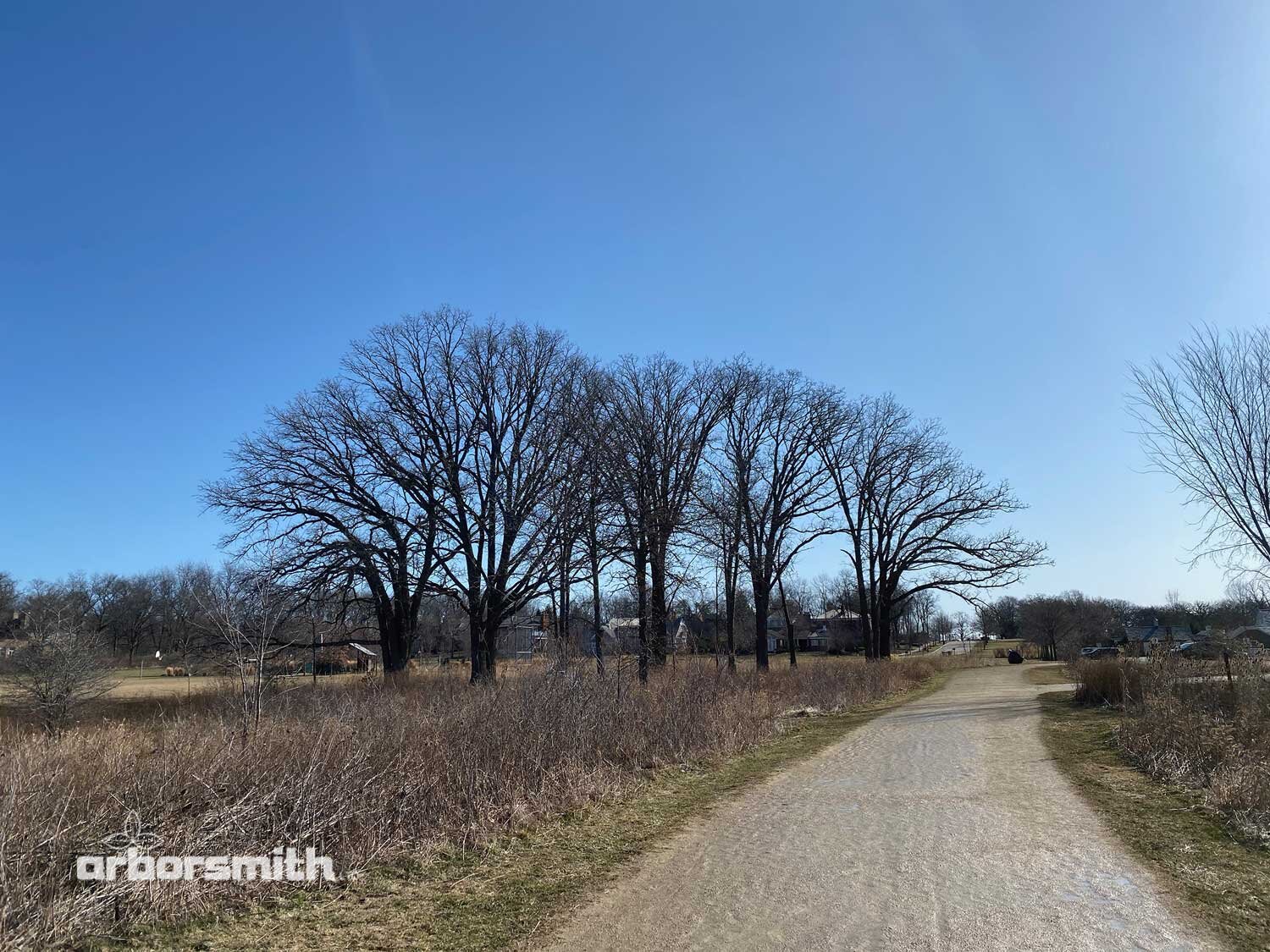What Does It Mean That Trees Are Tribal?
/Mother Nature’s Moment - May 2021
by: Lesley Bruce Smith, ISA Certified Arborist
These last two years we have all learned about our deep needs as humans to be together. We were not meant to live in isolation, to spend long hours, days, months with very little meaningful interaction with others. Going about our days behind masks, unable to even read the cues that all of us take for granted in our unspoken communications with one another. We have been diminished by all of this and knowingly or unknowingly are in grief around all we have lost.
The beautiful dance of the spring wildflowers creating massive amounts of nitrogen and other nutrients for their forest tree neighbors. This is a photo from the Daniel Wright Forest Preserve, May 2021 with the pristine white Trillium grandiflorum making it’s glorious spring show. Photos by Lesley Bruce Smith
Trees are like us in this regard. They were not meant to live in isolation away from their kind, exposed and unprotected by their fellow tree families. They are a forest species who grew up primarily in the company of other trees. This is not to say that they have not been able to survive in isolation. Just as we have had to survive in isolation. But trees in isolation will never thrive in the same way as when they live in community with other trees and symbiotic plants.
It is easy to understand that trees in groupings can help support one another from buffeting winds and scorching heat creating more friendly environments for them to grow. However, we almost always forget about their roots, the hidden parts of the trees that do most of the heavy lifting when it comes to their health and survival. Maybe most important of all is the acknowledgment that trees in a forest are diverse and they join with all the other forest species to create Nature’s complex web of life.
This stand of winter Oaks in the Middlefork Savanah in Lake Forest, IL clearly demonstrates how the trees live in groups when given the chance to do so. Photos by Lesley Bruce Smith
Tree roots are linked to the surrounding soil and other plant species and familial species through a complex web of mycelium (fungal) connections that vastly increases their ability to take up water, engage in critical oxygen exchange, absorb nutrients and, in fact, actually allows for a unique network of communication. Yes, trees really do communicate with one another, in the truest sense of that word! They can exchange carbon when one or the other is in need.* They can tell one another, using pheromones, of an incoming attack from invading insects or other disease pathogens allowing the trees to change their chemical composition to ward off invaders. Trees in a forest are in community, interacting with one another in ways we have only begun to know and imagine. This interaction makes them so much more robust, so much stronger than their urban and sub-urban counterparts who are trying to survive in a lawn by themselves.
Roots in a forest setting are twice as abundant as their lawn counter parts. Research at the Morton Arboretum done by Dr. Gary Watson has proven that by simply replacing lawn with organic mulch can increase the trees’ roots by 198%. That’s huge! All this to say, that when we are planning our landscapes, or re-planning them, if we want to help our old growth trees, it is best to think like a forest. Planting shrubs and trees in groupings and mulching around them to establish a more forest like soil will go a long way to help them “talk to one another” through their fungal root connections and in so doing increase their moisture and nutrient uptake. Remember it increases their roots, making them much stronger and able to withstand the storms of life. This is how they do it at the Morton Arboretum and the Chicago Botanic Garden. Diversify the plant material and plant as many native plants as is possible. The more we can think like a forest the happier our trees will be, because they too experience “grief” when forced to live in isolation.
*ref: Trees Are Tribal - 2018 Wisdom article May 2018, by Lesley Bruce Smith




